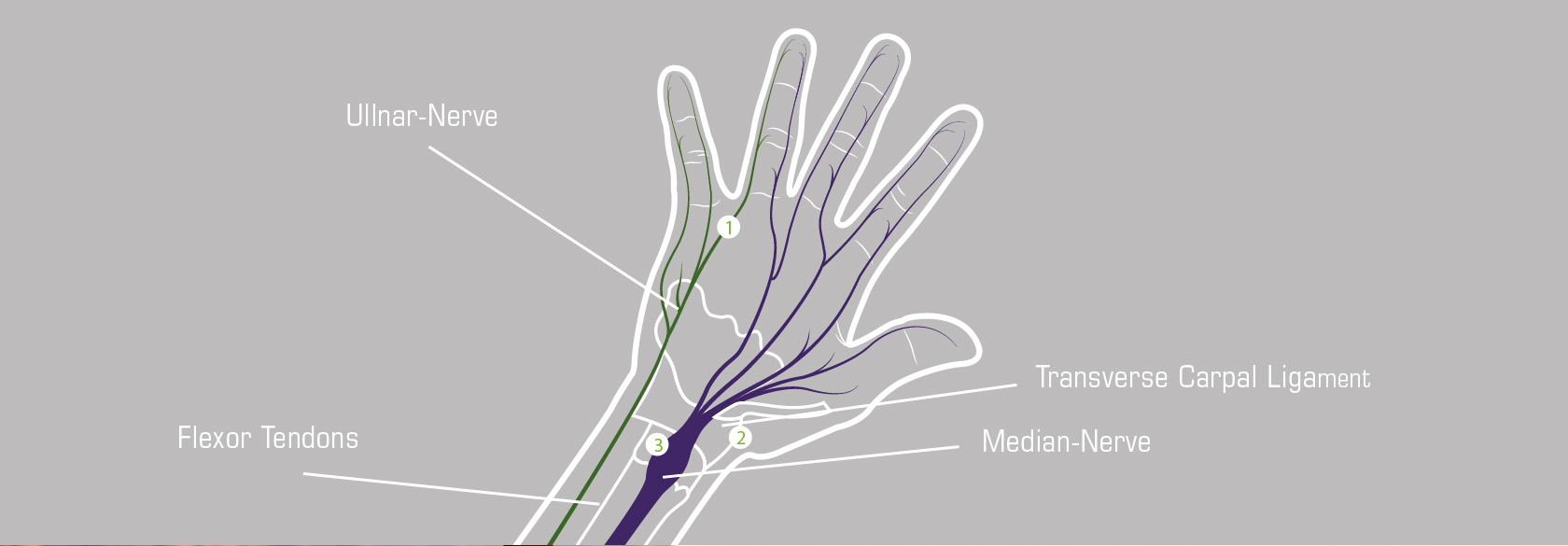
The hand has two central nerve tracts – the ulnar nerve and the carpal nerve.
When the colloquial expression carpal tunnel syndrome is used, several problems are often mixed up. As you can see on the illustration, the ulnar nerve runs along the palm of the hand to the small finger and the ring finger.
It does not react very sensitively to the hand being bent. However, it strongly reacts to pressure on the thenar area. In particular when riding a racing bike, the handlebar puts pressure on the outer area of the hand and therefore also on the ulnar nerve. This pressure results in numbness and weakness of the muscular system of the hand.
A second source of the problem is the median nerve. It passes through a small tunnel in the wrist (carpal tunnel). Pressure on and bending the hand will result in the known carpal tunnel syndrome. The carpal tunnel syndrome leads to a sensation of numbness of the thumb, middle finger and index finger. In some severe cases, this numbness only disappears a long time after the bicycle ride or gets worse in the night since the tissue of the hand tends to swell up a little at nighttime.
In summary this means:
Any pain and numbness of the hand is with 90% certainty the result of one of the following:
1. Pressure on the ulnar nerve which supplies the small finger and the ulnar part of the ring finger.
2. Pressure on the carpal tunnel (which supplies the other fingers)
3. Unnaturally bent position of the hand at the wrist.
4. Shock and vibration which irritate the ligaments and nerves.


